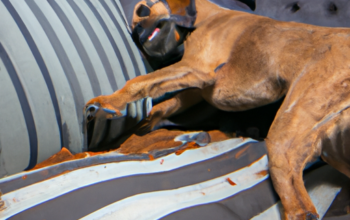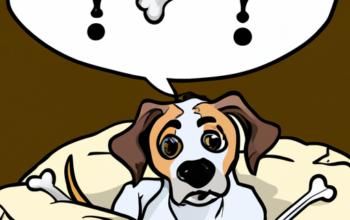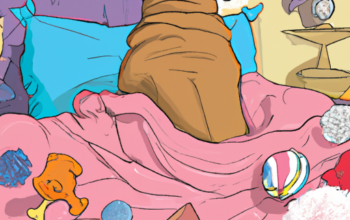Walking your puppy may seem as simple as pie, but did you know there’s an art to timing it perfectly, particularly after meals? As a responsible pet owner, it’s crucial to understand your furry friend’s digestive system and the ideal interval between feeding and exercising. Without this knowledge, you could unknowingly put your pup at risk of serious health issues.
This article will guide you on the potential hazards of immediate exercise post-meals and provide tips on safe engagement activities for your little one following their munching moments. It’s not just about keeping them fit; it’s also about ensuring they remain happy and healthy throughout their energetic puppy years.
So buckle up and prepare for a deep dive into maintaining a balanced routine for your beloved pet. Your understanding will make all the difference in providing the best care possible for your four-legged family member.
Understanding Your Puppy’s Digestive System
You’ve probably wondered how your puppy’s tiny tummy works, right? Well, understanding their digestive system is an essential part of figuring out the perfect walk time after they’ve had their meal.
The process starts in the mouth where food is broken down by enzymes and then travels to the stomach for further breakdown. Next, it moves to the small intestine where nutrients are absorbed into the bloodstream. Finally, waste products are passed to the large intestine and excreted.
This process can take anywhere from 4-5 hours but can vary depending on factors such as breed size or individual metabolism rate. For this reason, waiting at least 30 minutes before a walk post-meal prevents any discomfort during digestion and reduces chances of gastric torsion – a severe and potentially fatal condition.
The Ideal Timing Between Feeding and Exercise
Imagine it’s a cool morning, and you’ve just filled your beloved terrier’s bowl with food; ideal practice suggests waiting for about an hour to an hour and a half before engaging in any rigorous activity. This gives the little guy time to digest his meal, reducing the chance of gastric problems.
| When To Walk | Benefits |
|---|---|
| Immediately after eating | Can cause discomfort or potential health issues |
| 30 minutes post-meal | Some digestion occurs, but increased risk of upset stomach still present |
| 1 hour post-meal | Optimal balance: enough digestion has occurred to keep puppy comfortable during walk |
| 1.5 hours post-meal | Even better for digestion; lower risk of upset stomach during exercise |
| 2+ hours post-meal | Puppy may become restless or over-excited |
Remember: every pup is unique. Monitor yours closely and adjust timings as necessary.
Potential Health Risks of Immediate Exercise
While it’s tempting to let your pet burn off energy right away, doing so could pose serious health risks. When you allow your puppy to exercise immediately after eating, they’re at a higher risk of developing gastric dilatation-volvulus (GDV), commonly known as bloat.
This condition is potentially life-threatening and requires immediate veterinary attention. Bloat occurs when the stomach fills with gas and possibly rotates, causing intense pain and distress. It’s more common in large breed dogs but can affect puppies of any size or breed.
The exact cause isn’t entirely understood, but rapid eating followed by vigorous exercise is considered a significant risk factor. Remember, it’s best practice to wait about an hour before letting your puppy play or go for a walk post-meal.
Tips to Safely Engage Your Puppy Post-Meals
Curious about how to keep your little furball engaged safely post-meals without jeopardizing their health? Here’s a four-step guide to help you navigate this challenge:
-
Wait it out: After feeding, wait at least an hour before initiating any strenuous activities. This gives your puppy time to digest and reduces the risk of potential complications.
-
Engage in light play: Gentle indoor games like ‘hide and seek’ or ‘fetch’ can be fun without causing stress on the digestive system.
-
Short walks: Once the waiting period is over, take your pup for a short walk around the neighborhood. It’ll not only aid digestion but also stimulate their senses.
-
Monitor closely: Keep an eye on your puppy’s behavior during these activities; if they show signs of discomfort, stop immediately and consult with a vet.
Remember, safety first!
Maintaining a Healthy Routine for Your Pet
Just like us humans, our furry friends thrive on routine, so it’s crucial to establish a healthy daily schedule that includes meals, exercise, playtime, and rest; think of it as their version of the ‘9-to-5 grind’, only much more fun and rewarding.
Your pup’s regime should start with a balanced meal followed by an appropriate waiting period before engaging them in any physical activities. This helps prevent health complications like gastric torsion.
Regular exercise is equally essential not just for their physical well-being but also for mental stimulation. Make sure to allocate time for interactive games that’ll boost their cognitive skills.
Finally, never underestimate the importance of a good night’s sleep; ample rest plays a crucial role in your pet’s overall growth and development.
Practice this routine consistently to ensure your puppy grows into a healthy and happy adult dog.
Frequently Asked Questions
What types of food should I be feeding my puppy?
Feed your puppy high-quality commercial dog food that’s specifically formulated for puppies. This should include proteins, carbohydrates, fats, vitamins and minerals. You may also consider raw or homemade diets with a vet’s supervision.
How can I tell if my puppy is getting enough exercise?
You can tell if your pup’s getting enough exercise by observing its behavior. If it’s restless, destructive, or has excess energy, it may need more exercise. Regular vet checkups also help ensure your puppy’s health and vitality.
What are some signs that my puppy may have a digestive issue?
Like a detective on a case, you’ll notice signs if your pup’s belly isn’t happy. Watch for loss of appetite, vomiting, diarrhea or constipation. These can be red flags waving that your fur baby may have digestive issues.
Are there specific breeds that require more or less exercise after eating?
No specific breeds require more or less exercise after eating. It’s essential for all puppies to rest after meals to prevent stomach upset or bloat. Remember, their health and comfort should be your top priority.
How does the puppy’s age affect the amount of time needed to wait before walking them after eating?
Like a fine-tuned clock, a puppy’s age significantly impacts the waiting period before walks post-meals. Younger pups need 5 minutes per month of age, so a 3-month-old would wait about 15 minutes.
Conclusion
So, you’ve got the scoop on your pup’s digesting habits. Remember, waiting 1-2 hours post meal before a walk is key to avoid health risks like bloat, which affects about 60,000 dogs annually in the U.S.
Keep their exercise light and playful after meals.
With these tips in mind, you’re well on your way to ensuring a healthy routine for your furry friend. Harness this knowledge and enjoy many happy walks together!



